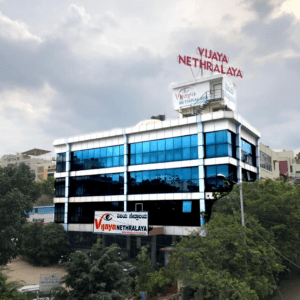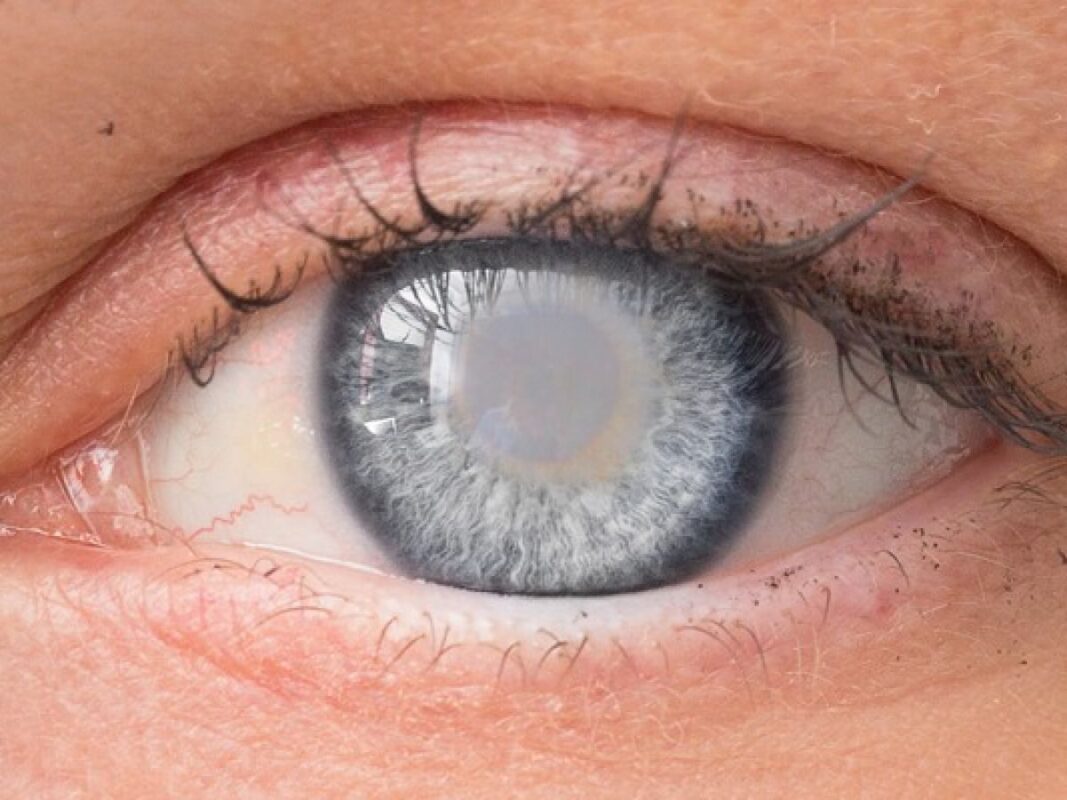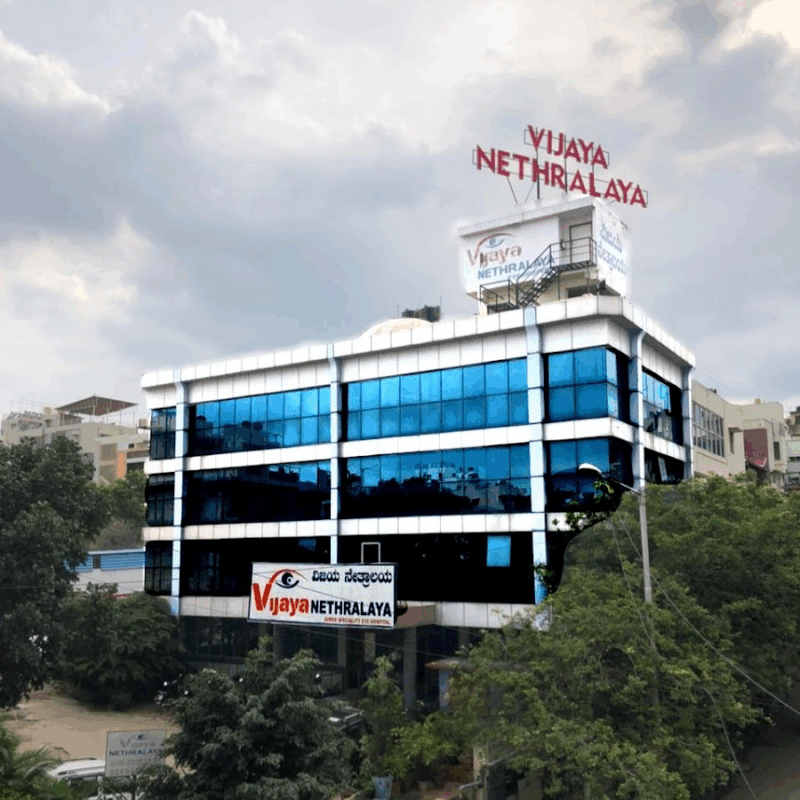Introduction to Vitreoretinal Surgery:
Vitreoretinal surgery is a specialized medical procedure aimed at treating various conditions affecting the vitreous and retina of the eye. It is a crucial aspect of ophthalmology, and it has revolutionized the treatment of numerous eye disorders, restoring vision and enhancing eye health for millions of people worldwide.
Understanding the Vitreoretinal System:
Before delving into the specifics of vitreoretinal surgery, it’s essential to grasp the fundamentals of the vitreoretinal system. The vitreous humor is a gel-like substance that fills the space between the lens and the retina. The retina, on the other hand, is a thin layer of tissue at the back of the eye responsible for capturing light and sending visual signals to the brain.
Here are some conditions where vitrectomy surgery may be useful:
- Retinal detachment: In cases where the retina has detached from the back of the eye, a vitrectomy can be used to remove the vitreous gel and relieve the traction on the retina.
- Diabetic retinopathy: Vitrectomy surgery can be used to remove blood and scar tissue from the retina in people with advanced diabetic retinopathy.
- Macular hole: A vitrectomy can be used to repair a macular hole, which is a small break in the macula, the central part of the retina responsible for sharp vision.
- Epiretinal membrane: Vitrectomy surgery can be used to remove a thin layer of scar tissue that forms on the surface of the retina, causing visual distortion.
- Vitreous hemorrhage: In cases where there is bleeding into the vitreous gel, a vitrectomy can be used to remove the blood and improve vision.
During the procedure, the surgeon makes small incisions in the eye and uses specialized instruments to remove the vitreous gel. The gel is replaced with a saline solution or gas bubble, which helps to hold the retina in place while it heals.
Vitrectomy surgery is a highly specialized procedure that should only be performed by an experienced ophthalmologist. While the surgery can be effective in treating certain eye conditions, it does carry some risks, including bleeding, infection, and retinal detachment. Your ophthalmologist can help you determine if vitrectomy surgery is right for you.

vitrectomy surgery near me:
If your looking for vitrectomy treatment or surgery then search for vitrectomy surgery near me on google.
Pars plana vitrectomy procedure:
Pars plana vitrectomy (PPV) is a surgical procedure involving removing the vitreous gel from the eye. The vitreous gel is a clear, jelly-like substance that fills the space between the eye’s lens and retina.
The procedure is typically performed in a hospital or outpatient surgical center under local or general anesthesia. Here are the general steps involved in the procedure:
- Incision: The surgeon makes a small incision in the eye to gain access to the vitreous gel. The incision is typically made near the pars plana, which is the area between the iris and the retina.
2.Removal of vitreous gel: The surgeon uses a special tool called a vitrector to remove the vitreous gel from the eye. The vitrector is a small, handheld instrument that uses suction to remove the gel.
3.Treatment: Depending on the reason for the procedure, the surgeon may perform additional treatments while the vitreous gel is removed. For example, the surgeon may remove scar tissue or repair a detached retina.
4.Replacement of vitreous gel: Once the vitreous gel has been removed, the surgeon may replace it with a saline solution or other fluid to maintain the shape of the eye.
5.Closure: After the procedure is complete, the surgeon will close the incision with sutures or an adhesive bandage.
Patients typically need to take some time off from work or other activities to recover from the procedure. It is important to follow the post-operative instructions provided by the surgeon to ensure a successful recovery.
Whether Pars plana vitrectomy is serious?
Pars plana vitrectomy (PPV) is a surgical procedure that involves removing the gel-like substance (vitreous) inside the eye and replacing it with a saline solution. Like any surgery, PPV carries some risks and potential complications. However, it is generally considered a safe and effective procedure when performed by an experienced surgeon.
Some of the potential risks and complications of PPV include:
- Infection: There is a risk of infection with any surgical procedure, including PPV.
- Retinal detachment: PPV can increase the risk of retinal detachment, particularly in patients who have had previous eye surgery or have a history of retinal detachment.
- Bleeding: PPV can cause bleeding inside the eye, which can impair vision and require additional treatment.
- Cataract formation: PPV can increase the risk of developing a cataract.
- Glaucoma: PPV can increase the risk of developing glaucoma, a condition that causes increased pressure inside the eye and can damage the optic nerve.
- Vision loss: In rare cases, PPV can result in vision loss.
While these risks are serious, it’s important to note that they are relatively rare and most patients who undergo PPV experience good outcomes. Your eye doctor can discuss the potential risks and benefits of PPV in more detail, based on your specific condition and medical history.
how long is vitrectomy surgery:
Pars plana vitrectomy (PPV) is a surgical procedure used to treat a variety of eye conditions, including retinal detachment, macular holes, and diabetic retinopathy. Recovery time after a PPV can vary depending on the individual patient, the underlying condition being treated, and other factors such as the patient’s overall health.
In general, most patients can expect to experience some discomfort, redness, and swelling for several days after the surgery. The eye may be covered with a patch or shield for the first day or two after the procedure, and patients may be advised to avoid strenuous activity or heavy lifting for several weeks.
Full recovery from a PPV may take several weeks to a few months, depending on the severity of the underlying condition being treated and the patient’s overall health. Patients may need to attend follow-up appointments with their ophthalmologist to monitor their progress and ensure that the eye is healing properly.
It is important to follow your doctor’s instructions carefully and report any unusual symptoms, such as severe pain or loss of vision, to your doctor immediately.
How much time does Pars plana vitrectomy surgery take?
The duration of Pars Plana Vitrectomy (PPV) surgery can vary depending on several factors such as the complexity of the case, the surgeon’s experience, and the patient’s overall health condition.
Generally, the surgery takes about 30 minutes to 2 hours to complete. However, in more complex cases, the surgery may take longer. The surgeon will provide a more accurate estimate of the surgery’s duration based on the specific circumstances of each individual case.
It’s worth noting that the time taken for the actual vitrectomy procedure is usually only a portion of the total time spent in the operating room. Patients will usually need to spend some time before and after the surgery for preoperative preparations, anesthesia administration, and postoperative recovery.
What are the steps of Pars plana vitrectomy?
- Insert trocars in the pars plana if 3.0 to 4.0mm from the limbus depending on the lens status typically using a beveled incision technique.
- Perform a core vitrectomy to remove the central vitreous gel.
- Induce a posterior vitreous detachment if a natural one has not already occurred.

What are precautions need to be followed after the ppc:
- Avoid crowded and dusty places.
- Avoid washing your face with water for the next 2 weeks.
- Bring along all your eye drops with after surgery when you are going to the hospital.
- Wash your hands before instilling eye drops on the operated eye.
- Do not miss your appointments with your doctor.
Foggy vision after PPC normal:
PPC (Posterior Capsulotomy) is a surgical procedure that involves using a laser to create a small opening in the back membrane of the lens capsule in the eye. This procedure is typically performed to treat posterior capsule opacification (PCO), a condition that can develop after cataract surgery and cause cloudy or blurry vision.
After undergoing PPC, it is normal to experience some degree of blurry or foggy vision, as your eye may need time to adjust to the changes made during the procedure. However, this typically resolves within a few days to a week as the eye heals.
If your vision remains persistently blurry or foggy after this initial period, it is important to follow up with your eye doctor, as this could be a sign of a complication or underlying issue. Your doctor may perform additional tests or examinations to determine the cause of your symptoms and recommend the appropriate treatment.
Does cataract surgery include PPC?
PPC (Posterior Capsule Opacification) is a common complication that can occur after cataract surgery. It happens when the back of the capsule that holds the lens implant becomes cloudy, causing blurred vision or other visual disturbances.
To treat PPC, a laser procedure called YAG (yttrium-aluminum-garnet) laser capsulotomy may be performed. During this procedure, a laser is used to create a small hole in the cloudy back capsule, which allows light to pass through to the retina and restore clear vision.
So to answer your question, cataract surgery itself does not include PPC treatment, but if PPC occurs after the surgery, YAG laser capsulotomy may be required to treat it.
What happens if you don’t stay face down after a vitrectomy:
After a vitrectomy, the surgeon will typically recommend that the patient stays face down for some time, usually ranging from a few days to several weeks. Staying face down helps to ensure that the gas bubble placed in the eye during the surgery stays in the correct position and helps to keep the retina in place while it heals.
If a patient does not stay face down as recommended, the gas bubble may not remain in the correct position, which can cause the retina to detach or lead to other complications. Additionally, not following the post-operative instructions can result in a slower healing process, increased discomfort, and potentially, more severe complications.
It’s important for patients to carefully follow the instructions provided by their surgeon after a vitrectomy to ensure the best possible outcome and avoid any potential complications. If a patient has any concerns or questions about their post-operative care, they should discuss them with their surgeon.












